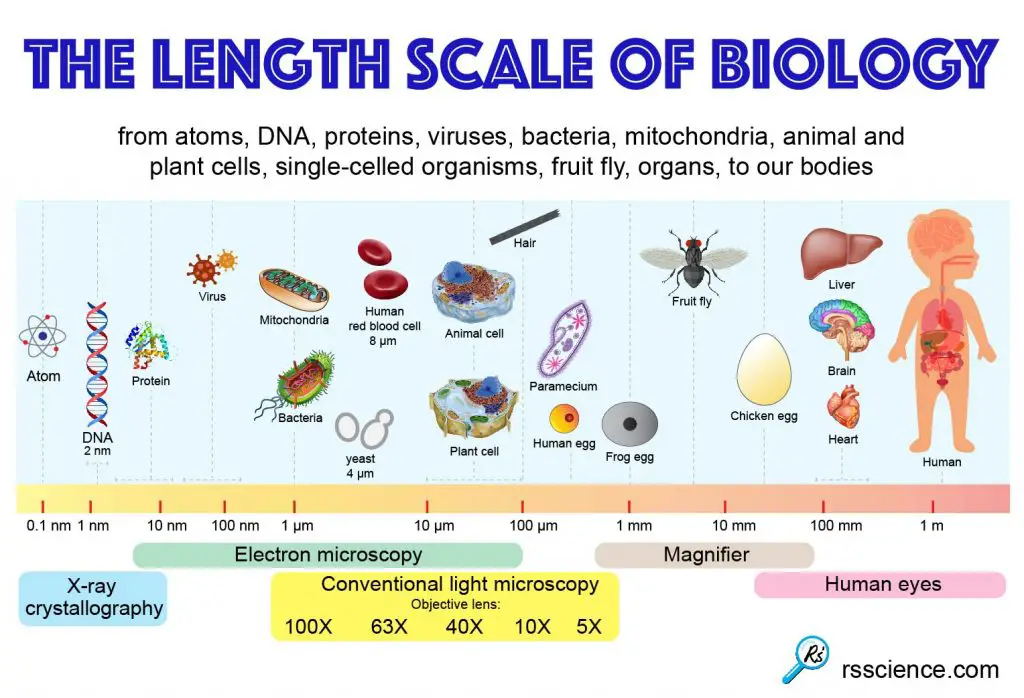This article covers
Size matters
Size matters in biology. From the diameter of DNA molecules (2 nanometers) to the height of an adult (1.75 meters), the length scale can be across approximately 9 orders of magnitude! It could be challenging to intuit these relative sizes because we cannot directly observe these scales.
In this article, we will understand better how wide the range of biological scale is. You will learn why knowing the relative scales between different biological concepts are so important. I will also share with you several fun facts about the sizes in biology. Let’s get started!
Scientific notation of the metric system
The biology scale can span a huge range: from an atom to an elephant. In order to manage the vast numbers, we usually use the metric system and “Scientific notation” to refer to the length in the biological scale.
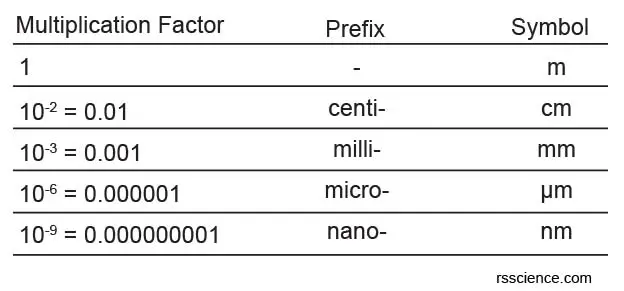
[In this table] To express numbers that are too large or too small to be conveniently written in decimal form, it is common to use “Scientific notation” in biology and other science branches. Here is the list of units that describe the size (in length) of biological objects. “m” = meter.
An overview of the biological scale
To understand the magnitude of the biological scale, the best way is to find a good representative example in that range as a reference object. Let’s see what we have here.
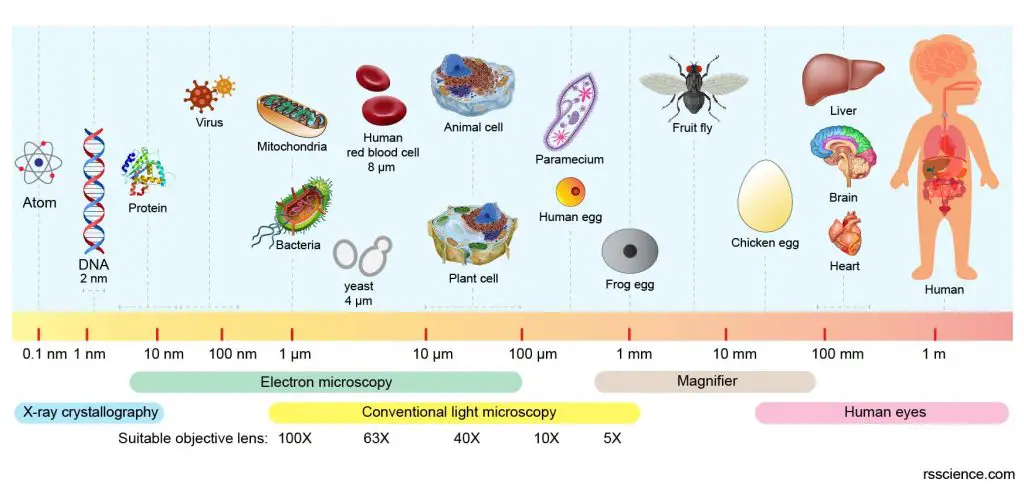
[In this figure] Knowing the exact dimension of the specimen is critical for a biologist. Here, we summarize a biological scale to give you a sense of the sizes of different biological objects.
Atom
An atom is the smallest unit of ordinary matter. Atoms are around 100 picometers (10−10 m or 0.1 nm) across. Usually, we use 1 angstrom (1Å = 10−10 m) for the size of an atom.
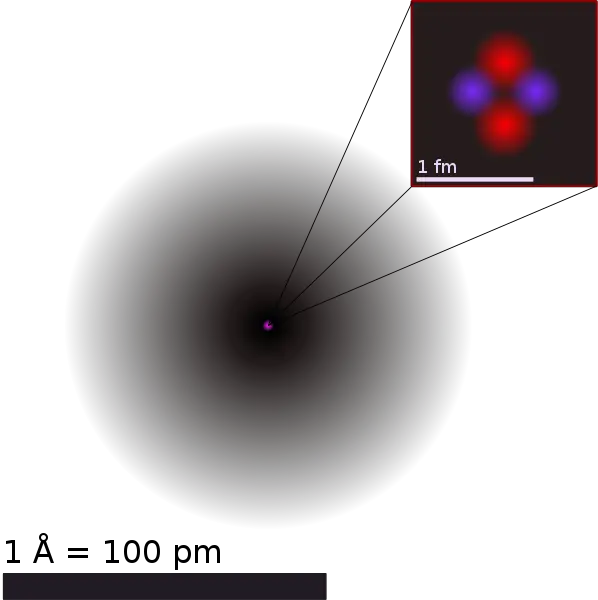
[In this image] An illustration of the helium atom, depicting the nucleus (pink) and the electron cloud distribution (black). The black bar is one angstrom.
Photo credit: wiki
Small biological molecules
Biological molecules refer to all the molecules present in organisms that are essential to the biological functions of cells. Small biological molecules could be chemicals like oxygen and water as well as units to build macromolecules (DNA, complex carbohydrates, proteins, and lipids). These molecules range from 0.2 nm – 1 nm.
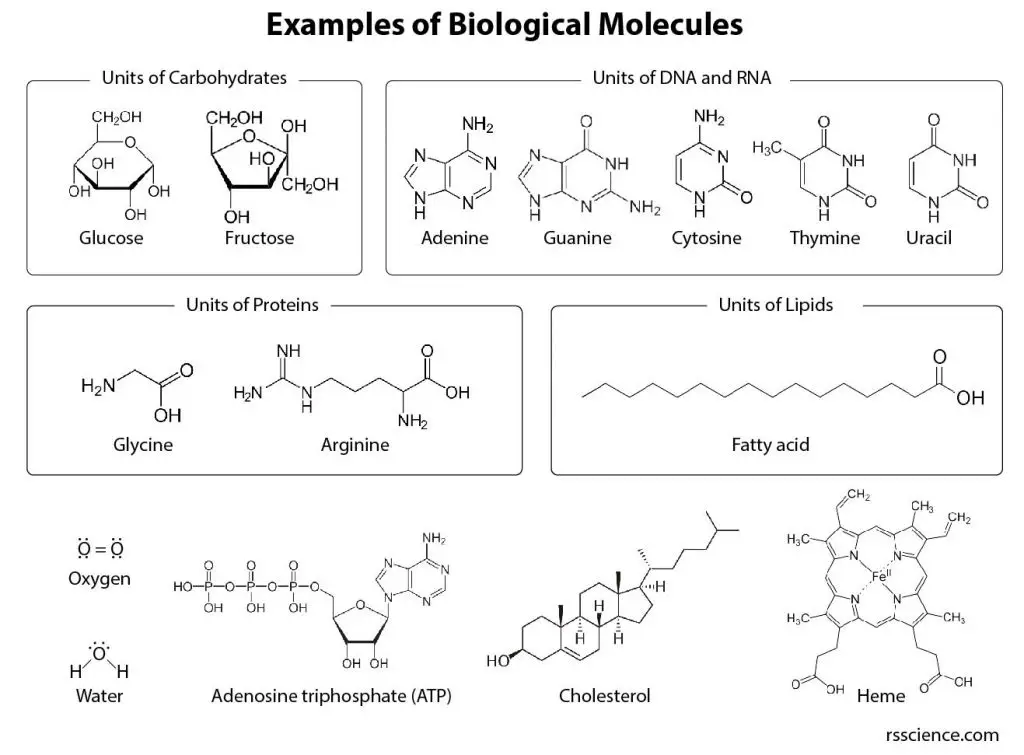
[In this image] Several examples of biological molecules.
DNA
DNA is a molecule composed of two polynucleotide chains that coil around each other to form a double helix. The DNA double helix has a diameter of 2 nm. The space between two base pairs is 0.34 nm. The distance between each helix turn is 3.4 nm (including ~10 base pairs).
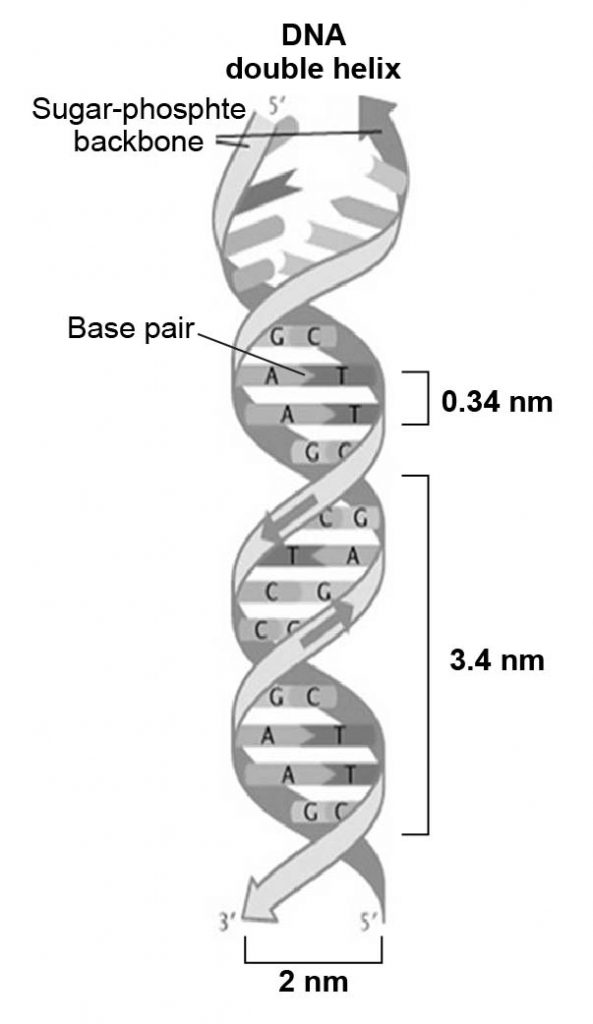
[In this image] An illustration of a DNA double helix.
Modified from IOPScience
Although individual DNA nucleotide is very small, a DNA polymer can be very large and may contain hundreds of millions of nucleotides. For example, chromosome 1 is the largest human chromosome with approximately 220 million base pairs and would be 85 mm long if straightened.
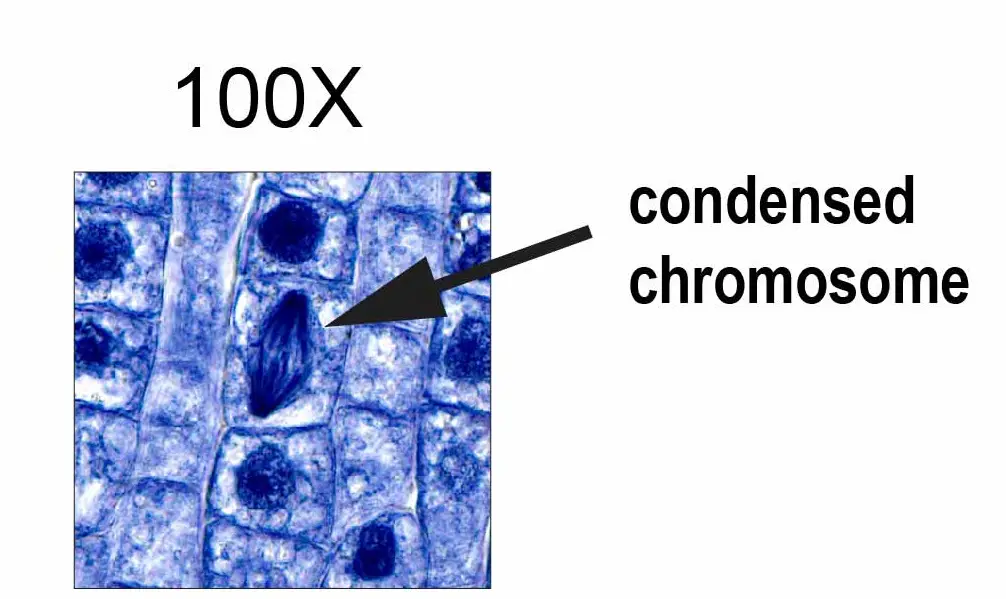
[In this figure] Condensed chromosomes in plant root cells under a 1000x magnification (10x * 100x = 1000x).
DNA molecules are too thin to be seen. However, DNA chains condense into chromosomes when the cells are dividing. Therefore, these chromosomes can be visualized by Methylene blue staining under the light microscope. Click here to learn more about the cell nucleus.
Proteins
Proteins are long chains of amino acids that fold into 3D structures. Different proteins may consist of different numbers of amino acid units, ranging from less than a hundred to thousands.
Usually, protein sizes are measured by the numbers of amino acids or molecular weights (MW; in kilodalton or kDa). Dalton (Da) is an alternative name for the atomic mass unit, and kilodalton (kDa) is 1,000 daltons. For example, insulin is a small protein that consists of 51 amino acids, and its weight is 5.8 kDa. Blood coagulation factor VIII (FVIII) is a huge protein that consists of 2,351 amino acids and 267 kDa.
Typical protein sizes could be 3-6 nm across. You can estimate the protein sizes by this table.
| Protein (MW) | 5 kDa | 10 kDa | 20 kDa | 50 kDa | 100 kDa | 200 kDa | 500 kDa |
| Rmin (minimum radius) | 1.1 nm | 1.42 nm | 1.78 nm | 2.4 nm | 3.05 nm | 3.84 nm | 5.21 nm |
Viruses
A virus is a tiny structure (virion) that consists of a single molecule of nucleic acids (RNA or DNA) surrounded by a protein coat, and/or a lipid envelope. Viruses have some of the properties of life. However, they do not have a cellular structure, nor can they reproduce without a host cell. For these reasons, viruses are not generally considered to be alive.
The size of viruses ranges from 20 to 400 nm, which is too small to be seen with an optical microscope. It would be best if you had a transmission electron microscope to see viruses.
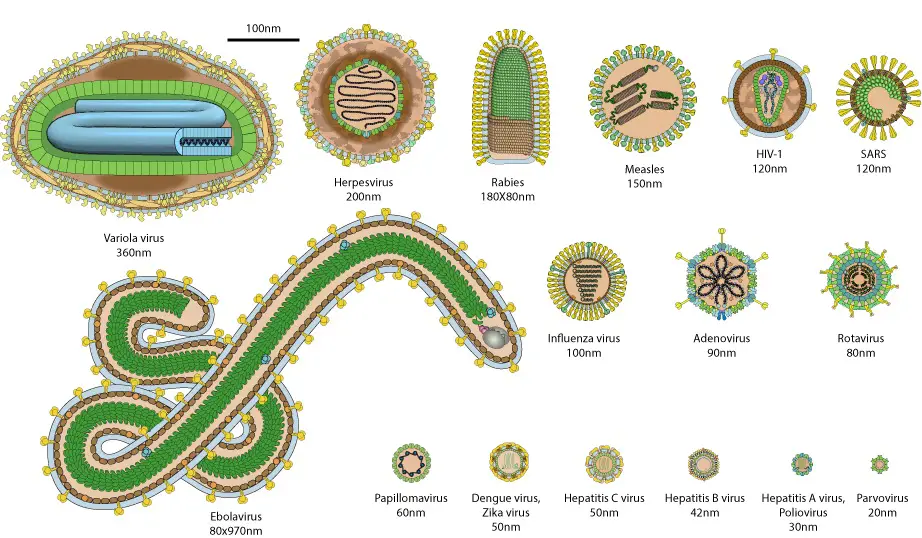
[In this figure] The relative sizes of common human viruses.
Photo credit: ViralZone
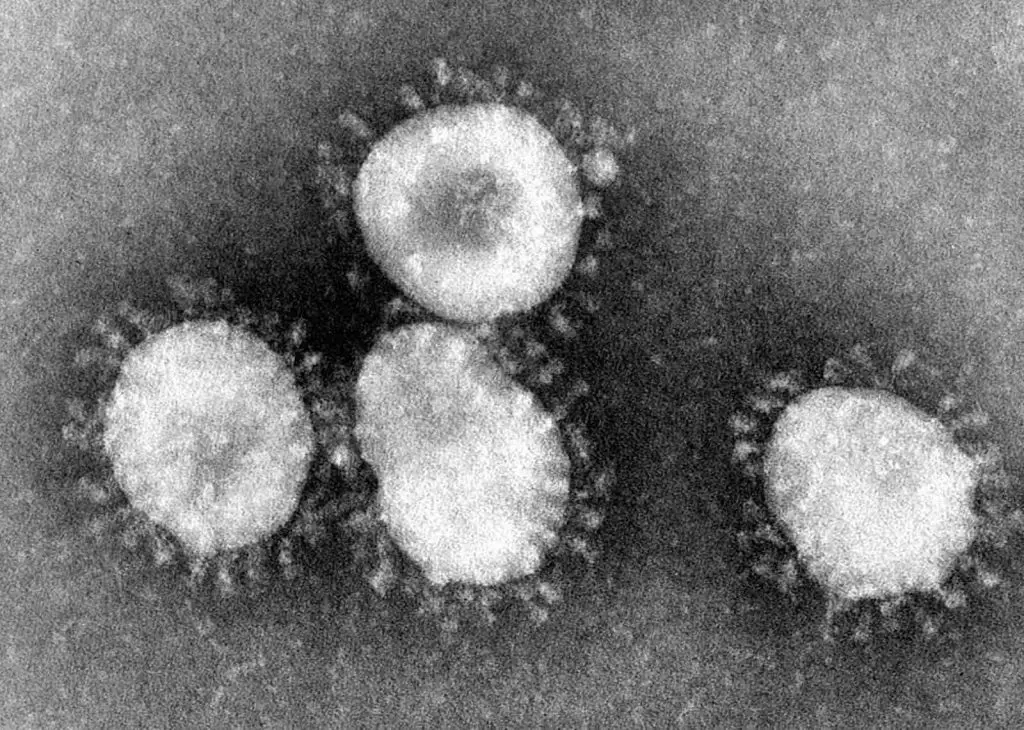
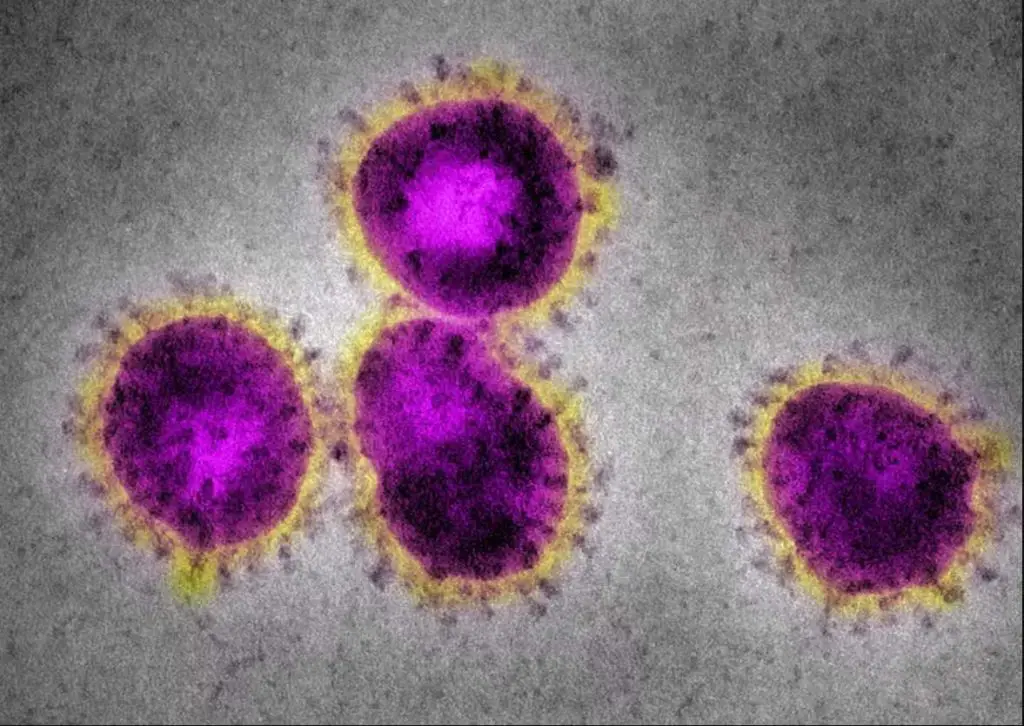
[In this figure] Coronaviruses have a halo or crown-like (corona) appearance.
The COVID-19 is one kind of coronaviruses. Their virion size is about 120 nm. Original electron microscopic images are always black-and-white. The colors are artificially painted for better visualization (right).
Photo credit: CDC.
Want to learn more about “Viruses?” Check our two posts below.
Bacteria
Bacteria are prokaryotic cells — they don’t have nuclei and other organelles. Bacteria have diverse shapes and sizes. For spherical bacteria (Cocci sp.), the diameter can range from 0.2-2 µm. The length can range from 1-10 µm for filamentous or rod-shaped bacteria (Bacilli sp.).
The most well-known bacteria: E. coli, their average size is ~1.5 µm in diameter and 2-6 µm in length.
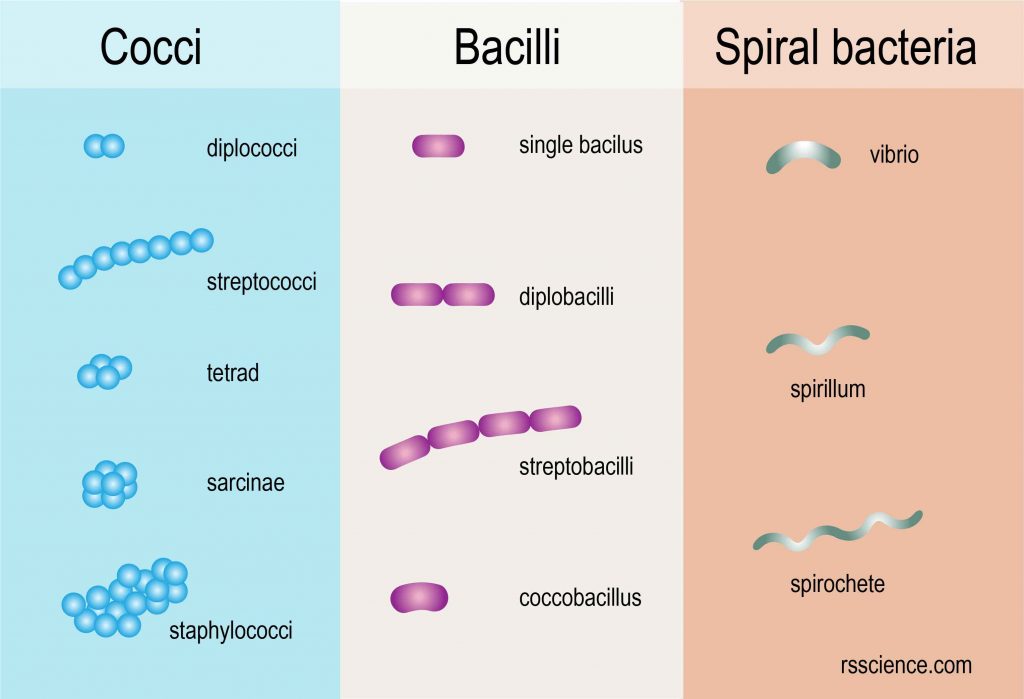
[In this figure] The bacteria can be grouped into three basic shapes, coccus (spherical, plural: cocci), bacillus (rod-shaped, plural: bacilli), and spiral.
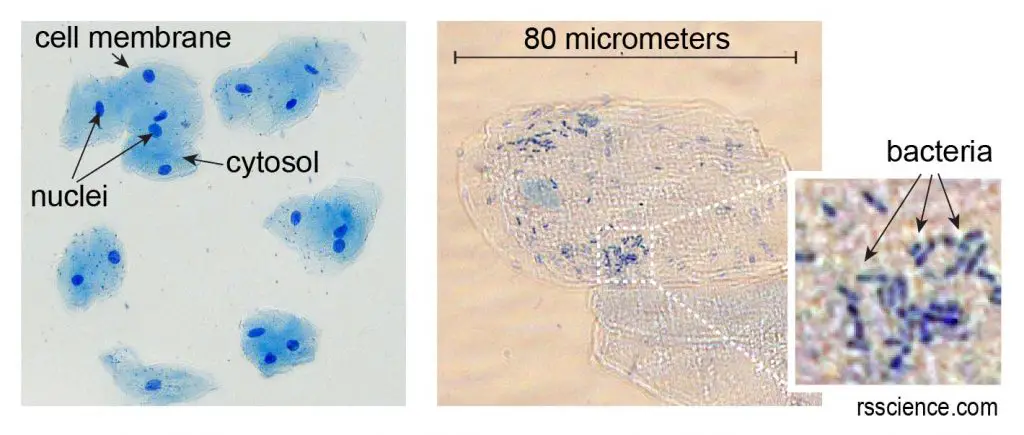
[In this figure] Simple stain of the human cheek cells.
You can see these bacteria under an optical microscope with high magnification (640x -1000x) objective lens.
Want to learn more about “Bacteria?” Check our two posts below.
Mitochondria
Mitochondria (singular: mitochondrion) are rod-shaped cell organelles found in eukaryotic cells. Mitochondria are considered the power generators of the cell. During cellular respiration, mitochondria convert glucose and oxygen to produce adenosine triphosphate (ATP), the biochemical energy “currency” of the cell, which can be used to do any cellular activities.
Scientists believe mitochondria were derived from the bacteria engulfed by today’s eukaryotic cells’ early ancestors. These bacteria lost their ability to live independently and become integrated as part of the host cells by the establishment of an endosymbiotic relationship. For this reason, it is not difficult to understand why the sizes of mitochondria (approximately 0.75 – 3 µm) are so similar to bacteria.
Want to learn more about “Mitochondria?” Check our post below.
Yeasts
Baker’s yeast (Saccharomyces cerevisiae) is an example of small eukaryotic cells. They are about 4 µm in diameter and can reproduce by budding a new cell from the parental cell.
Yeasts are one of the everyday things you should take a look at under a microscope.

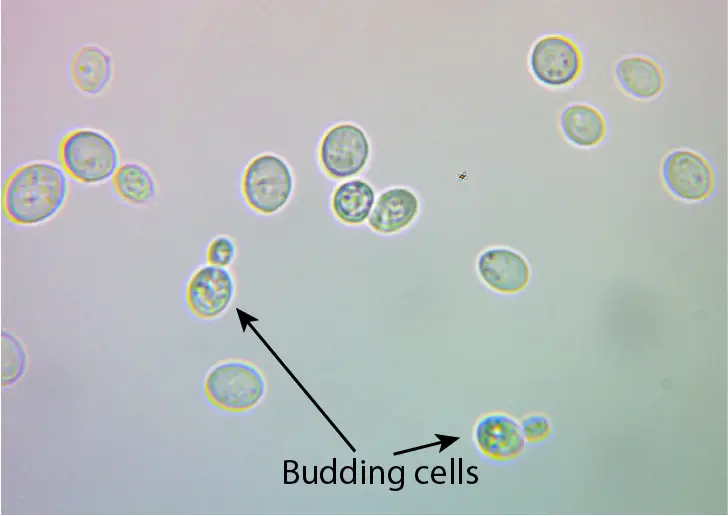
[In this figure] Microscopic view of yeast cells.
Yeast cells are oval in shape and some of them are dividing (budding yeasts).
Red blood cells
Red blood cells are the most abundant blood cells. They carry oxygen from the lungs to all parts of the body. There are over 5 million red blood cells per cubic millimeter of blood.
Mature human red blood cells look like oval biconcave disks. They are about 7.5 µm in diameter and 2 µm in thickness. Compared to other human cell types, red blood cells are relatively small. For example, white blood cells are much bigger and range from 10 – 20 µm.
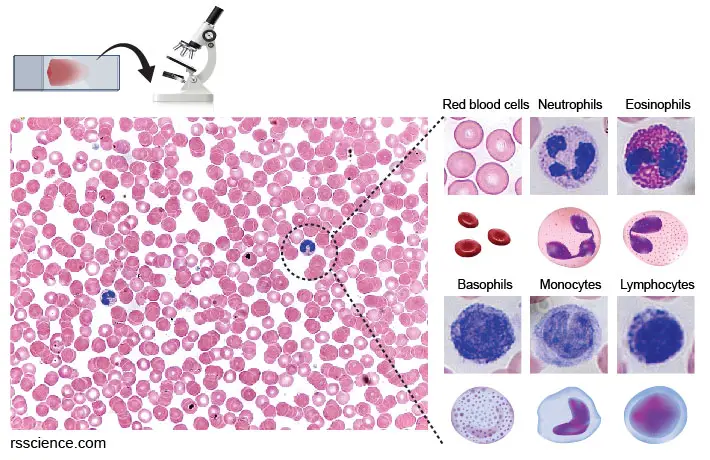
[In this image] Look at red blood cells and white blood cells under a microscope.
Animal cells and Plant cells
Both animals and plants are multicellular organisms. The cells are the “building blocks” of animal and plant bodies. Animal cells typically range from 8 µm to 50 µm. However, their sizes and shapes could be very different based on their functions. For example, our neuron can extend protrusions, called axons, to send signals to a muscle fiber that is far away from the neuron. These neurons range from a tiny fraction of an inch (or centimeter) to three feet (about one meter) or more in length.
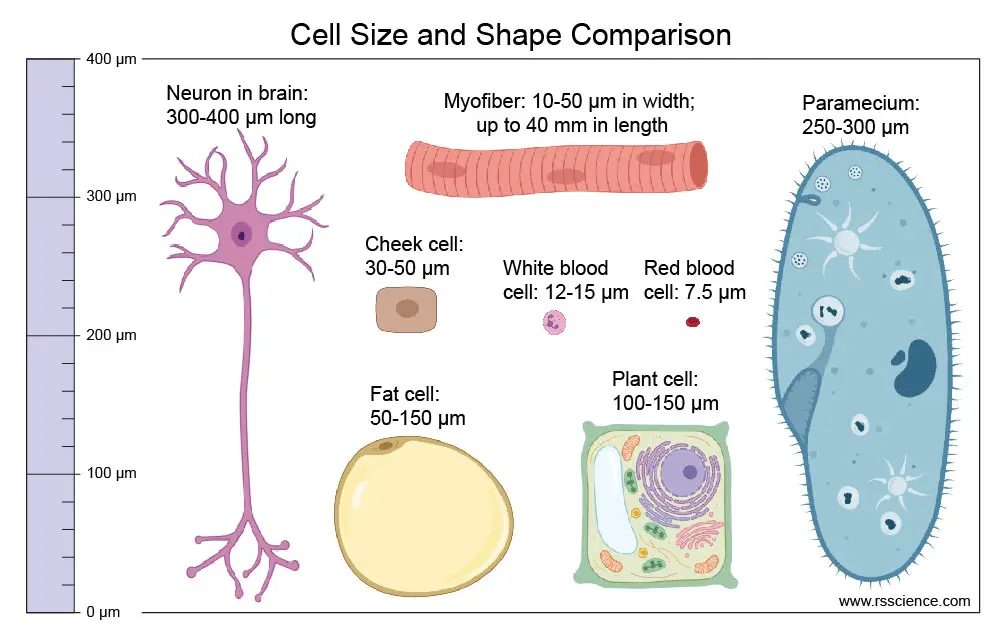
[In this figure] Different cell sizes and shapes comparison.
Human cells are relatively small. Some cells (like neurons and muscle cells) can be long. Fat cells (adipocytes) could be big because most of their cytoplasm is occupied by a huge oil droplet. On the other hand, plant cells and single-celled organisms (like paramecium or amoeba) are larger in size and require cytoplasmic streaming to distribute substances in these cells.
If we just measure the sizes of cell bodies, then the egg (ovum) is one of the largest cells in the human body, typically 120 µm, and is visible to the naked eye.
[In this video] Cells in motion.
Animal cells can change their shapes due to the lack of cell walls.
Plant cells are usually bigger than animal cells and are range from 20 – 100 µm. Plant cells have a cell wall to maintain a fixed cell shape.
Want to learn more about “the Similarity and Differences between Animal and Plant cells?” Check our posts below.
Paramecium
Paramecium (pair-ah-me-see-um; plural, Paramecia) is a unicellular (single-celled) living organism with a shape resembling a slipper. Paramecium is naturally found in aquatic habitats. They range 50 to 300 µm in length.
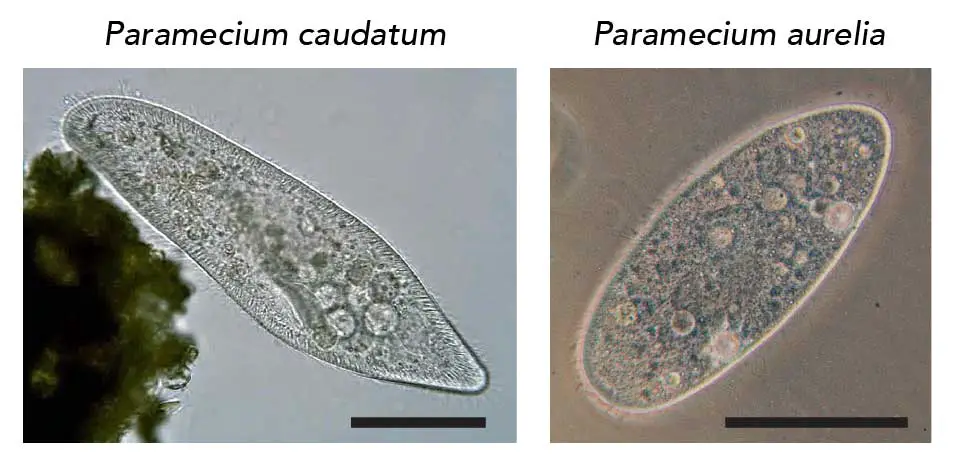
[In this figure] Sizes of paramecia vary from species to species.
P. caudatum is among the largest protozoan and can grow up to 200-300 µm. It is barely visible to the naked eye. Another common paramecium, called P. aurelia, is smaller (50-150 µm). P. caudatum is more elongated and P. aurelia is more ovoid in shape.
Photo credit: P. caudatum (Deuterostome), P. aurelia (Barfooz on Wiki)
You may notice that the cell sizes of single-celled microorganisms could be much bigger than cells in multicellular animals and plants. Amoebas and Stentors are two more examples of large single-celled microorganisms.
Want to learn more about “Microscopic Organisms in a Drop of Pond Water?” Check our posts below.
Hair
Hairstyling is a part of our everyday life, but have you ever really looked at your hair under a microscope? The human hair is around 60-100 micrometers in width.
Want to learn more about “Hair under a Microscope?” Check our posts below.
Why the biological scale is important?
There are several reasons making the biological scale is one of the most important tools when we study biology. We will show you in detail in the next article:
(1) A good comparison helps us understand biology better
(2) Break the myths
(3) Embarrass the excitement of extreme cases
(4) Know what you can see and what you cannot see
(5) Choose the right tools
(6) Knowing how small we are

